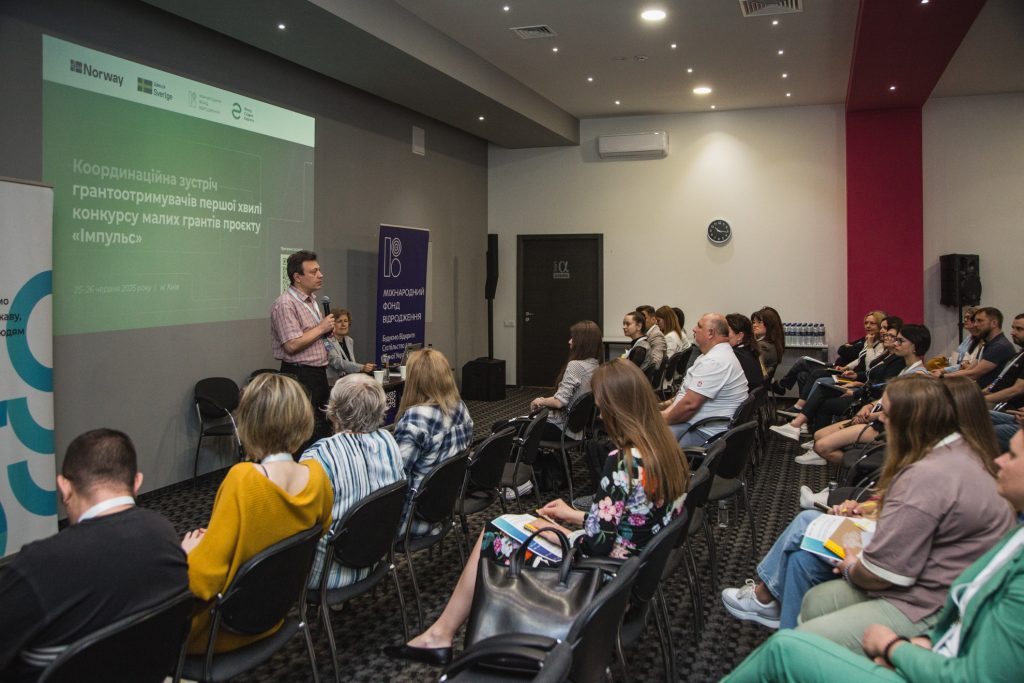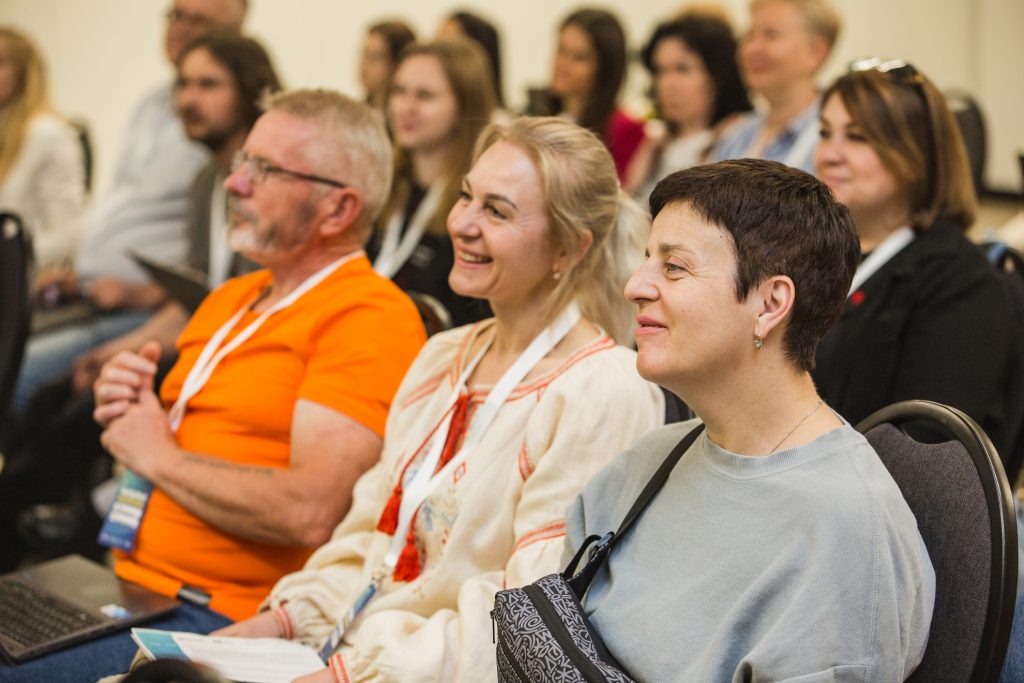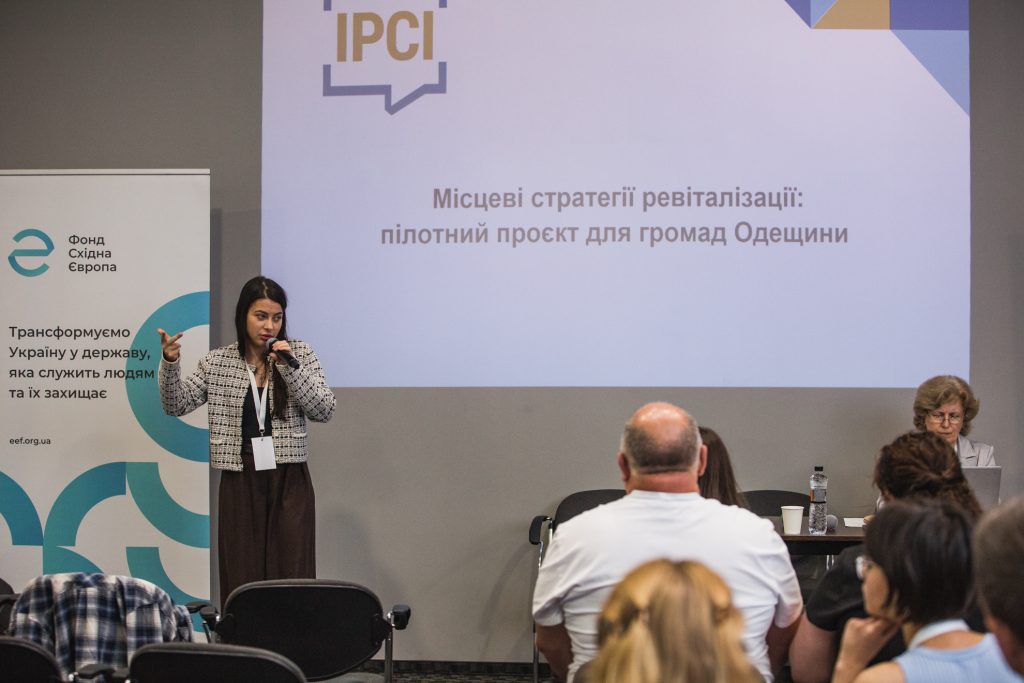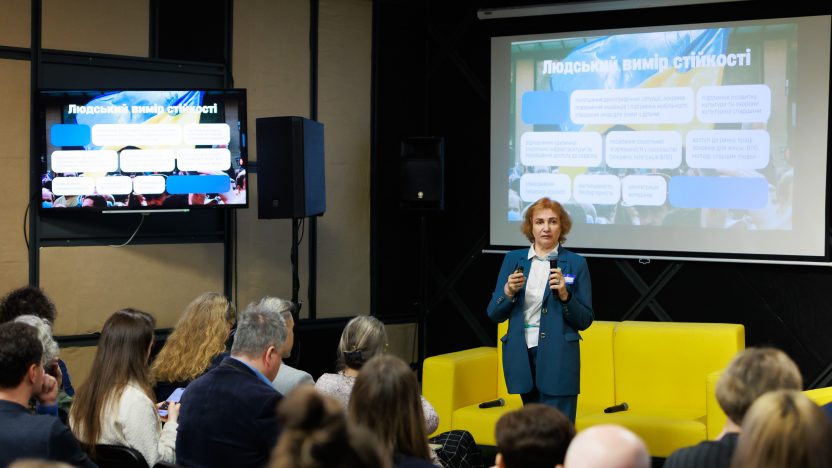A people-centered approach is key to successful reconstruction and early recovery after war. But what does it really mean to put people at the center of recovery processes and outcomes? How does this approach differ from traditional humanitarian aid? And why is it important not only to achieve results, but also to ensure that communities become active participants in the process of change? We offer answers to these questions and explain how human-centered recovery works in the Impulse Project and beyond.
What does human-centered recovery consist of?
Human-centered recovery means that people—their dignity, rights, needs, and opportunities—are at the heart of recovery efforts. This requires creating conditions for people to participate in decision-making, supporting their activism and ability to advocate for change. Notably, this is not about one-time assistance, but about creating opportunities. To comply with this principle, the project must seek systemic solutions for entire communities, involving the residents themselves. These are the kinds of initiatives that the Foundation supports, as they give communities and citizens the tools for active participation and lay the foundation for sustainable change and development.
The Impulse Project: Empowering Civil Society for Sustainability and Recovery in Ukraine, which the International Renaissance Foundation is implementing together with the Eastern Europe Foundation with the support of Norway (Norad) and Sweden (Sida), is based precisely on the principles of human-centeredness. Understanding this concept will be useful for those who are just planning to apply for the competition and those who are already working on their ideas. It helps to better evaluate projects through the prism of the values and priorities of the Impulse Project and the Foundation as a whole, and to think about how to incorporate sustainability and community development into your projects through human capacity development.

The defining features of human-centered recovery are:
- citizen participation in planning and decision-making;
- prioritizing people over infrastructure;
- creating an environment conducive to life and development;
- supporting people’s ability to solve their own problems;
- focus on long-term impact rather than one-off support;
- working through institutions (communities, organizations) rather than providing direct assistance to individuals.
This approach is important not only for its results, but also for the process itself, in which communities become active participants in change. For example, when the ecological restoration of a river becomes a joint community effort: people discuss the problem and its solution, participate in clean-ups, learn to care for water resources, and create initiatives that will ensure the sustainability of the result.
During this process, experience in cooperation is formed, trust grows, and sustainable mechanisms for participation emerge. After the project is completed, new opportunities for development and growth remain in the community: stronger civil society organizations, partnerships, planning and monitoring practices. Citizen participation in decision-making is a key indicator of human-centeredness, ensuring that decisions address real needs — both today and in the future.
What is and what is not human-centered recovery
The Foundation considers areas where people are not only recipients of support but also active participants in change and drivers of community resilience to be closely related to human-centered recovery. These include:
- Integration of internally displaced persons into new communities and support for IDPs in general
- Reintegration of veterans
- Gender equality
- Inclusiveness
- Rights of persons with disabilities (mobility, accessibility of services)
- Capacity building of civil society organizations
- Use of data and research for planning
- Creation of mechanisms for public monitoring and oversight (particularly in the area of anti-corruption)
- Involvement of citizens in decision-making
- Education as a service, not just infrastructure
- Environmental and climate resilience issues
- Recovery and planning of de-occupied territories
- Interregional solidarity and exchange of experience

There are topics that are related to human-centered recovery but only partially, helping to develop human capital and strengthen communities. The Foundation actively supports projects related to these topics, but they are not a priority for the Impulse Project. This does not mean that your project cannot address these topics at all. However, they cannot form the basis of your project or be the core idea on which the project will focus.
This circle includes:
- Youth policy
- Mental health
- Culture and cultural heritage (commemoration, formation of Ukrainian national or civic identity)
- Labor market development and employment
- Support for small and medium-sized businesses
- Energy and heat supply as components of community viability
There is another category of topics that simultaneously address community resilience and assistance to war victims, but which we do not consider part of human-centered recovery. Within the framework of Impulse, you cannot apply for funding for projects in areas such as:
- Humanitarian aid;
- Transparency and accountability of public authorities;
- Economic justice and tax policy;
- Rule of law and access to justice;
- Information security and countering disinformation;
- European integration at the community level;
- Support for independent media;
- Digital infrastructure and communications;
- Individual artistic practices.
Additionally, the Foundation does not support projects that provide medical services or focus on animal welfare, scientific research, the construction or repair of critical infrastructure, political parties, religious organizations, or commercial institutions. Projects in these areas are not eligible for support.
Is your project people-centered?
For the Foundation, the key factor is how you plan to implement the project. If it is focused on participation, inclusion, dignity, co-creation, and transparency, then it is consistent with a people-centered approach. If your project does not have these priorities, even the most relevant topics will not be consistent with Impulse’s priorities.
Many of the initiatives supported by the Foundation can be seen as prototypes or new models that seek answers to complex questions. Their value lies in the fact that the solutions found can be scaled up and applied in different communities. These are not ready-made answers, but rather the creation of conditions for communities themselves to develop effective mechanisms that can later be deployed, disseminated, and co-financed.

Read also:
How a Small Push Sparked Big Change: Meet the People Behind Impulse
If you are already working in these areas but are unsure how well the human-centered component of your project is developed, we recommend that your team answer a few simple questions:
- Does your project create opportunities for people to participate in planning and decision-making?
- Does it involve citizens, civil society organizations, and communities in addressing issues related to human capital sustainability?
- Does your project leave behind not only immediate results, but also new tools and opportunities for community development?
- Does your project strengthen the capacity of the organization and build partnerships?
If the answers to these questions are positive, then your project is likely to truly put people at the center of recovery.
“People-centered recovery is when every action of an organization and community is measured by how it affects a specific person, not just statistics,” says Inna Pidluska, Deputy Executive Director of the Fund, about the meaning of recovery. “Our contribution is often invisible at first glance: strategy, law, reform. But in the big picture, these are the pieces of the puzzle that make up the future—a more open, fair, and humane one.”
We remind you that the Small Grants Competition within the Impulse Project is ongoing. You can read the terms and conditions of the competition and submit your application at the link.

